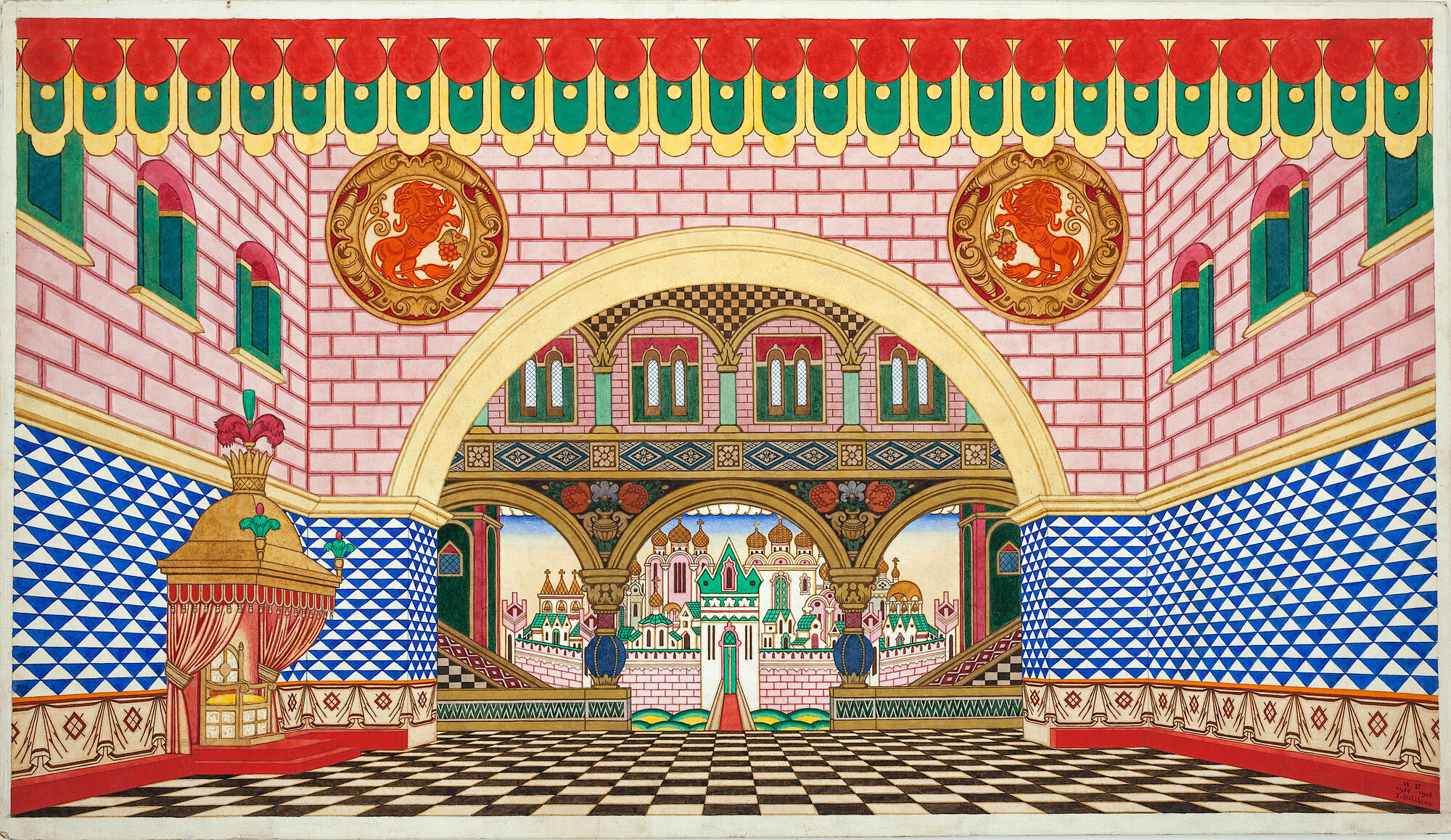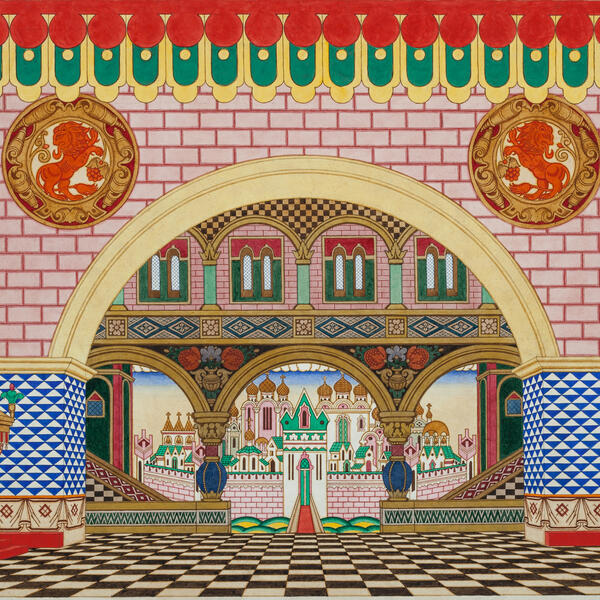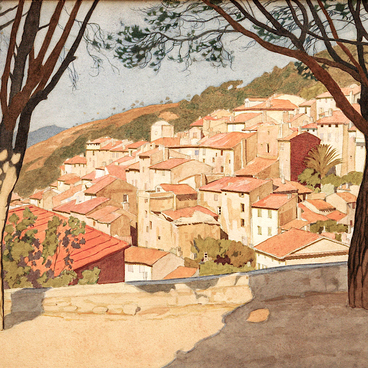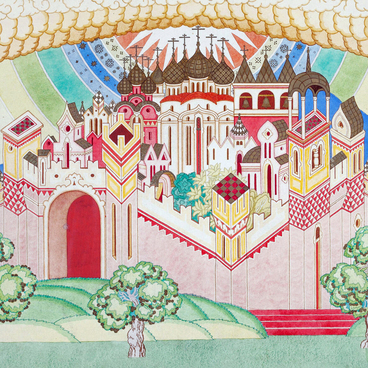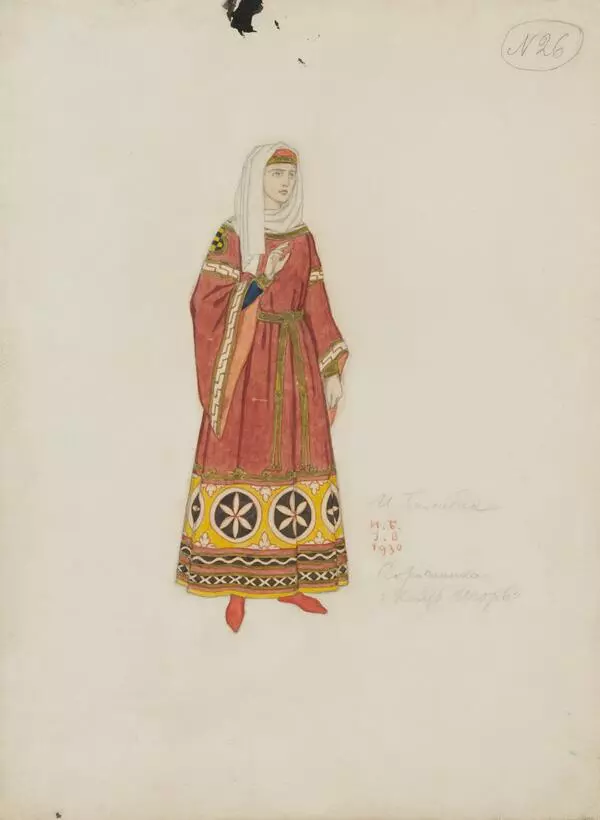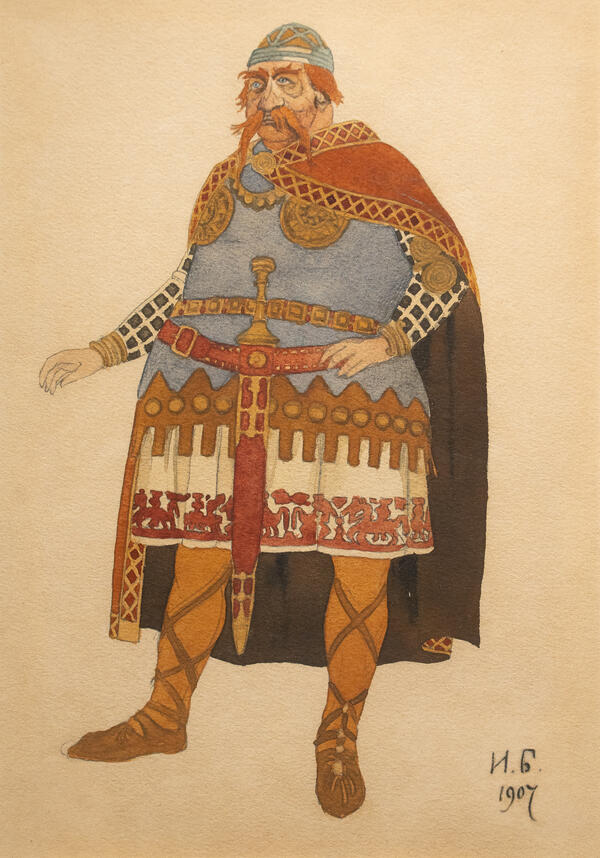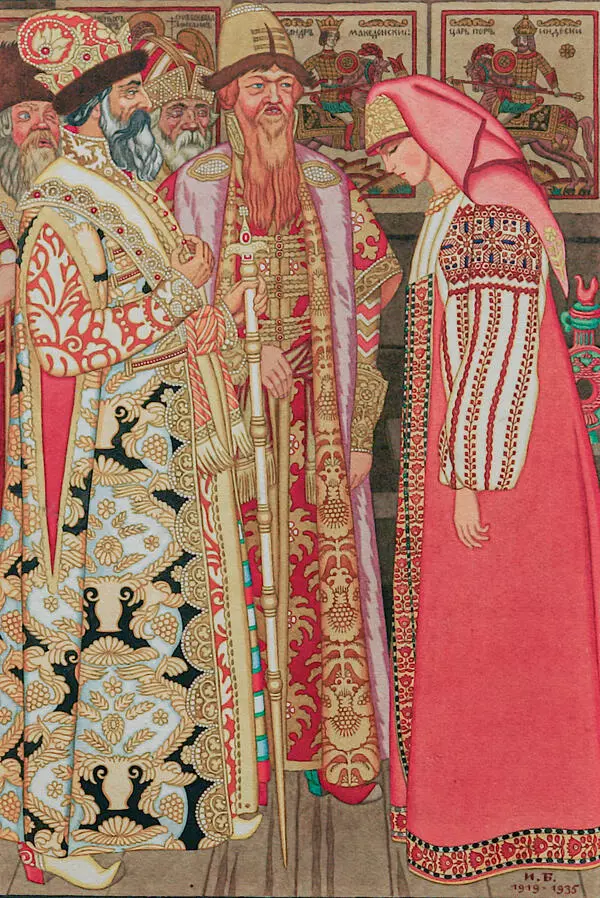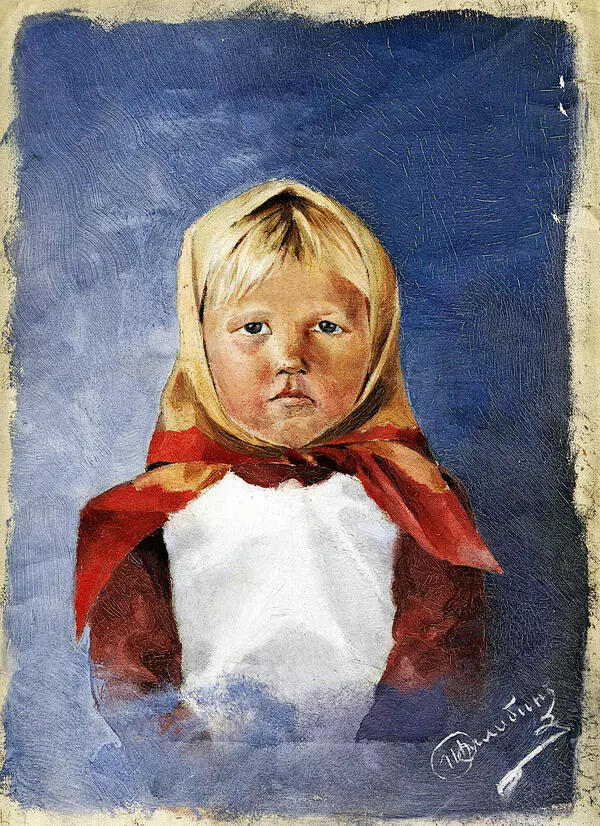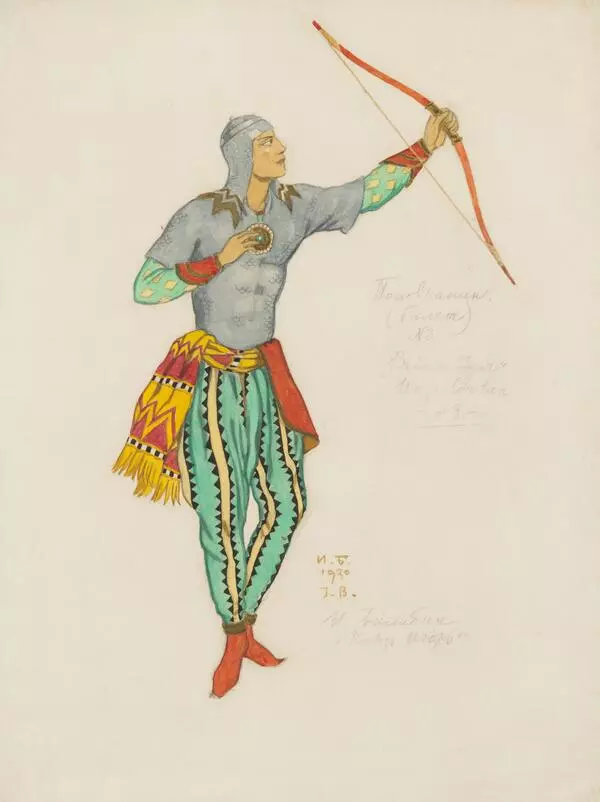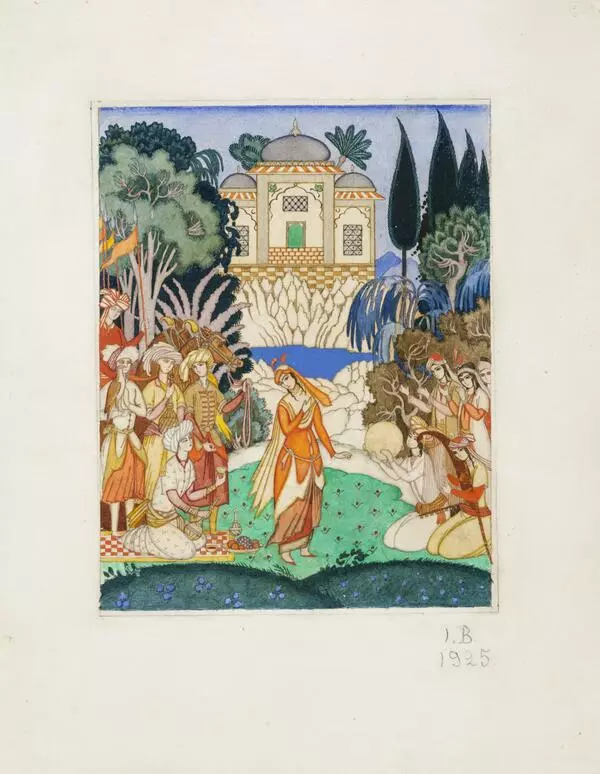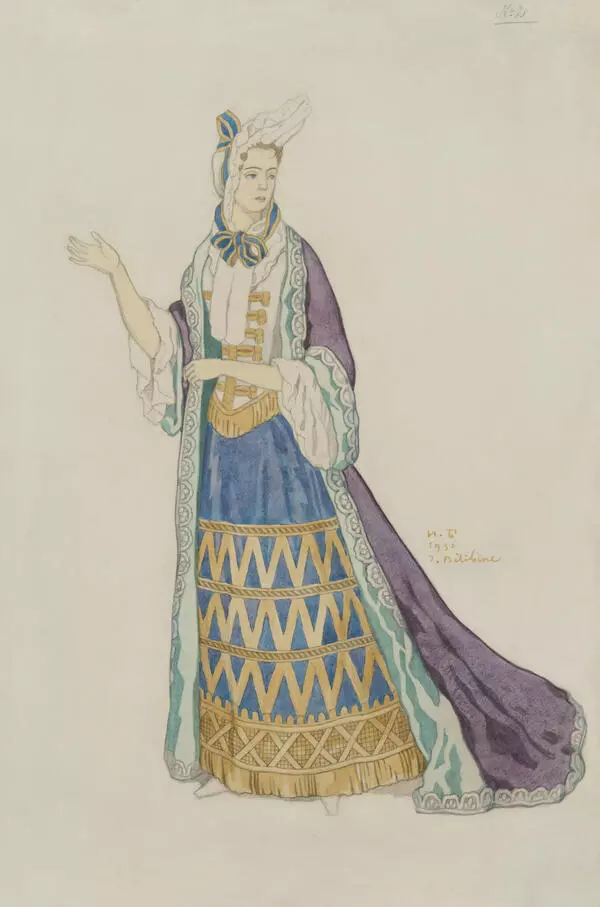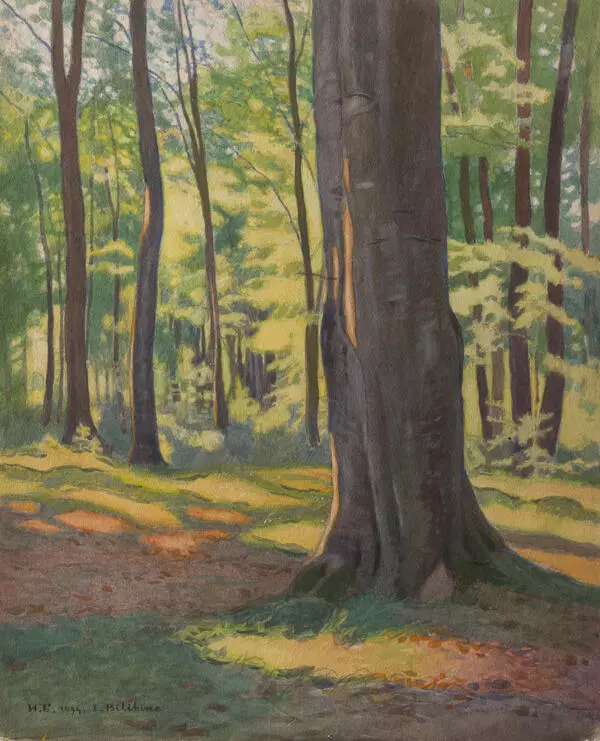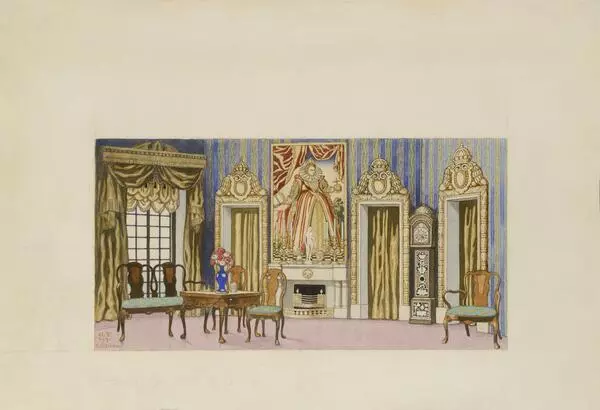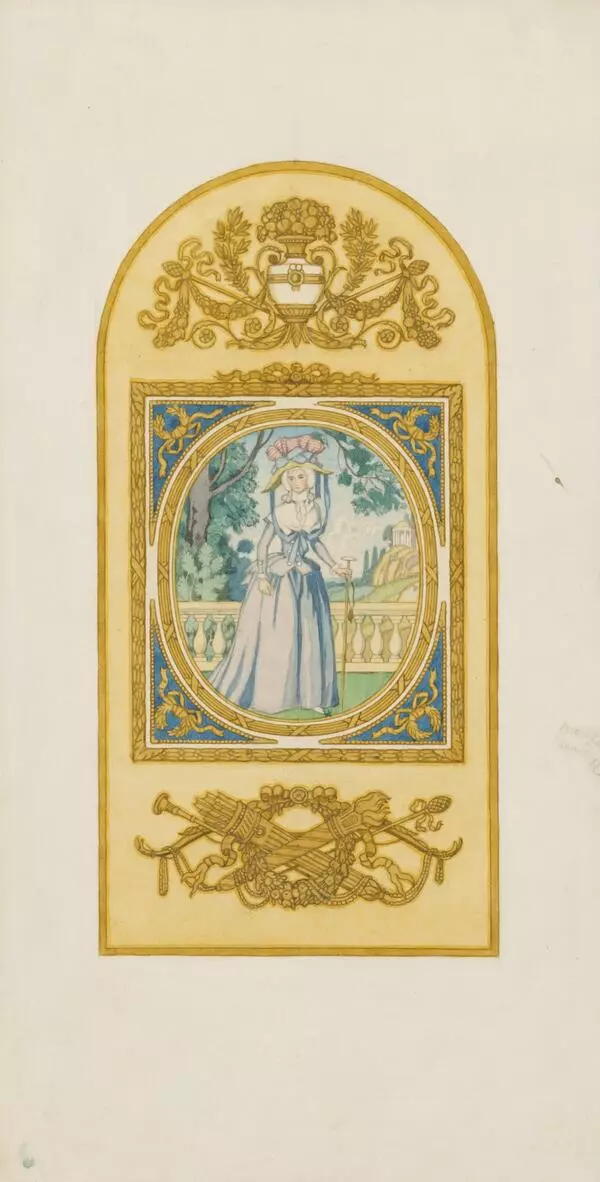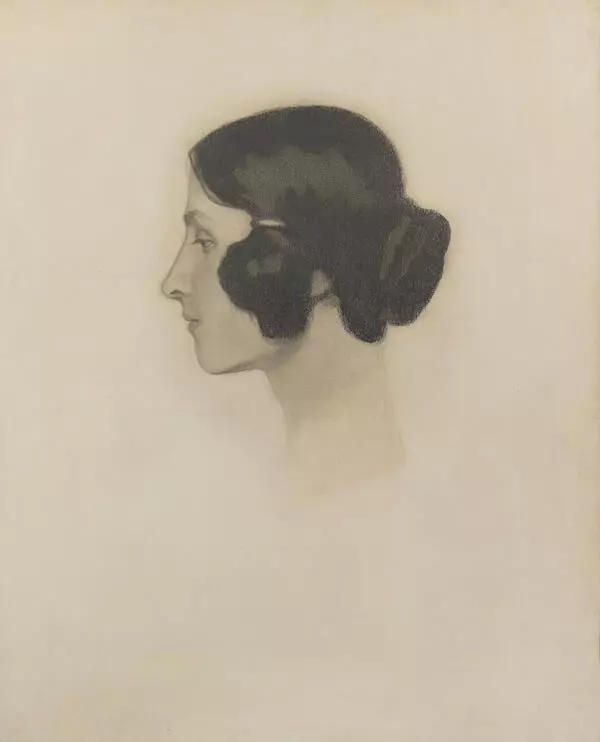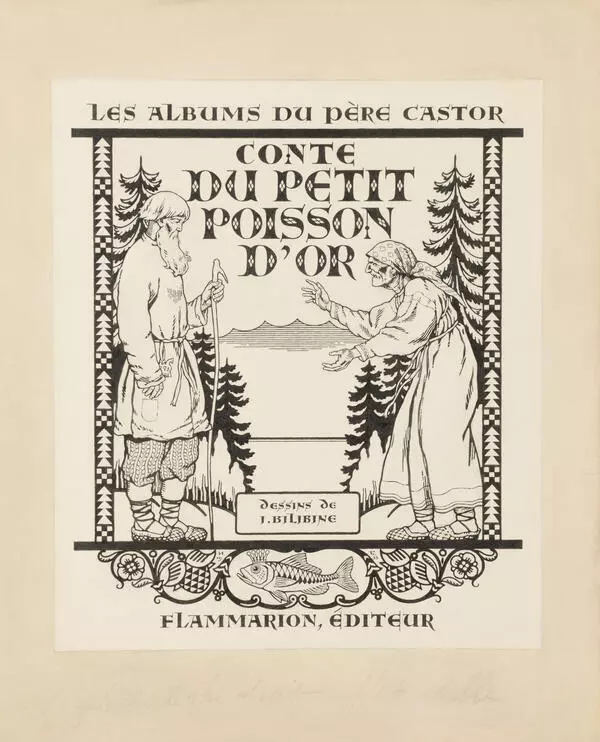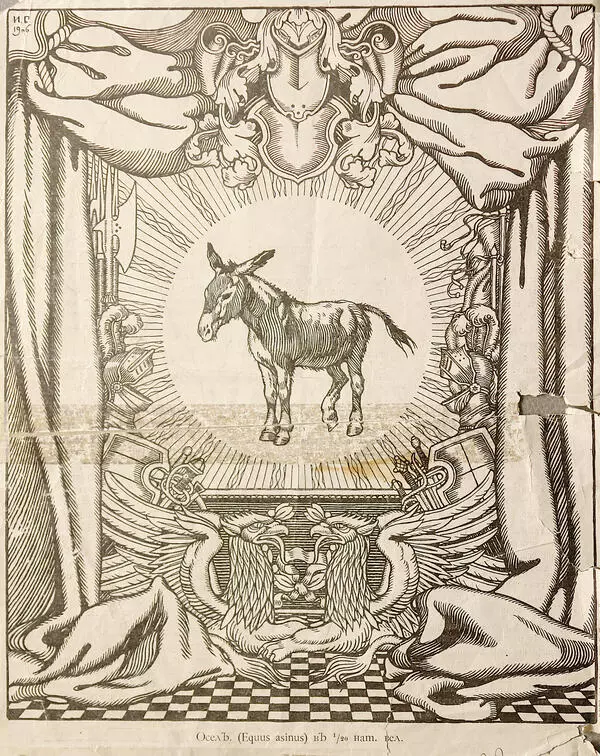The presented sketch of the scenery for the opera by Nikolay Andreyevich Rimsky-Korsakov “The Golden Cockerel” was created by the famous Russian artist Ivan Yakovlevich Bilibin in 1928 in Paris. This was not the first time when the artist turned to the fairy-tale theme in his oeuvre.
The premiere of Rimsky-Korsakov’s opera, composed in 1908 and based on the “Tale of the Golden Cockerel” by Alexander Sergeyevich Pushkin (libretto by Vladimir Ivanovich Belsky), due to censorship prohibitions could take place only at the end of 1909 on the stage of the Zimin Theater, a year after the composer’s death. However, the theater had begun negotiations with the composer immediately after he completed the music. At the same time, the stage designer was chosen: during that period Bilibin designed the cover for the publication of the opera score. The production of the Zimin Theater became one of the most striking theatrical phenomena of its time. The opera was an overwhelming success, and numerous reviewers credited Bilibin with it: the artist came closer to the truth than others, he was so taken by the author’s idea.
Two decades later, while in France, Bilibin was again working on the scenery for “The Golden Cockerel”. However, during this period of his emigrant life, the period of greatest success and popularity, he doubted whether he had chosen the correct path. Bilibin did not accept French citizenship and was thinking about returning to his homeland.
In the works of this period, the artist looked for the positive in the features of the Russian national character. He was then attracted not by comic types, but by images of glorious heroes, kind and intelligent rulers, and fabulous gentle beauties. Witty details disappeared, the satirical depiction of tsars and boyars was replaced by the idealization of Russian patriarchy. Bilibin’s art of this period was fueled by a sincere love for everything Russian, for the Motherland, his longing for it. When designing fairy-tale operas and ballets, Bilibin returned to the techniques of his “Golden Cockerel” — an emphatically flat, stylized interpretation of landscape and architecture. However, the influence of the Russian lubok (folk prints) was partially replaced by icon painting, and sometimes partially merged with the latter. Compared to the 1909 “Golden Cockerel”, the new works were more colorful and had a much more spectacular lighting: cities of white stone and golden domes against a bright blue sky, sparkling clothes and kokoshniks (traditional headdresses) blended into a festive symphony of light.
Undoubtedly, Bilibin’s techniques influenced the subsequent designers of “The Golden Cockerel” and other fairy-tale inspired performances.
